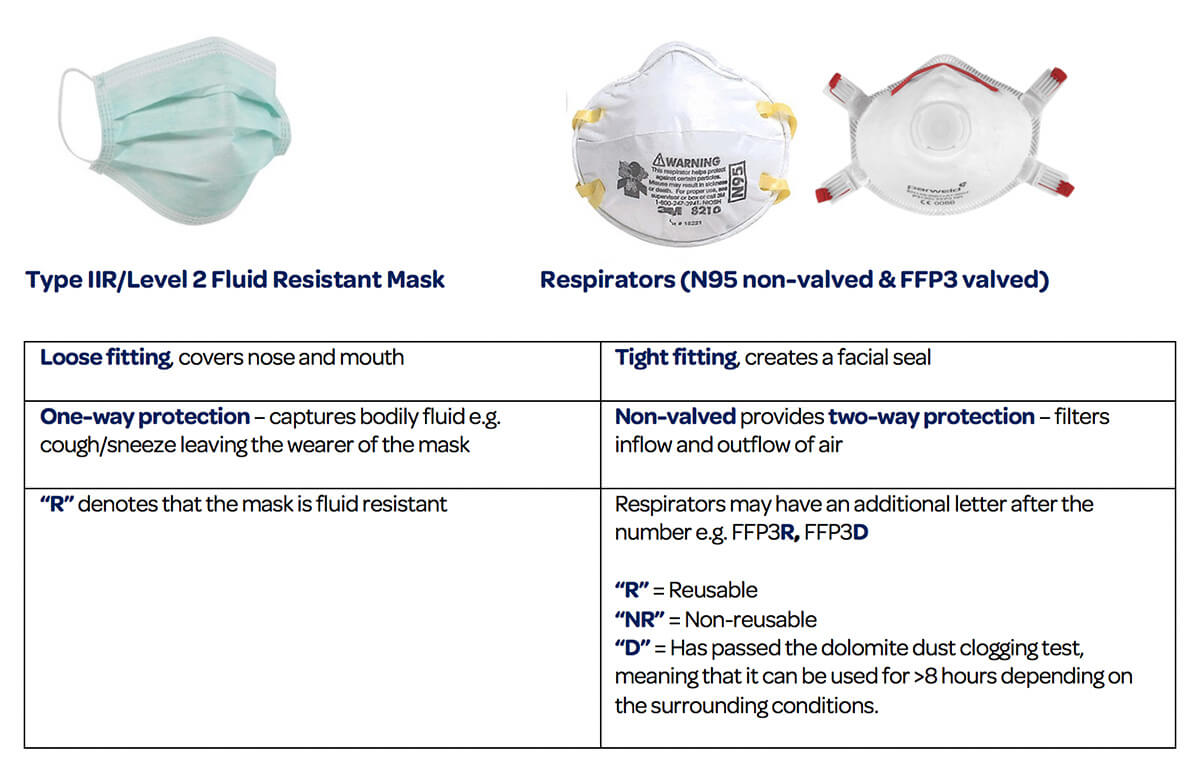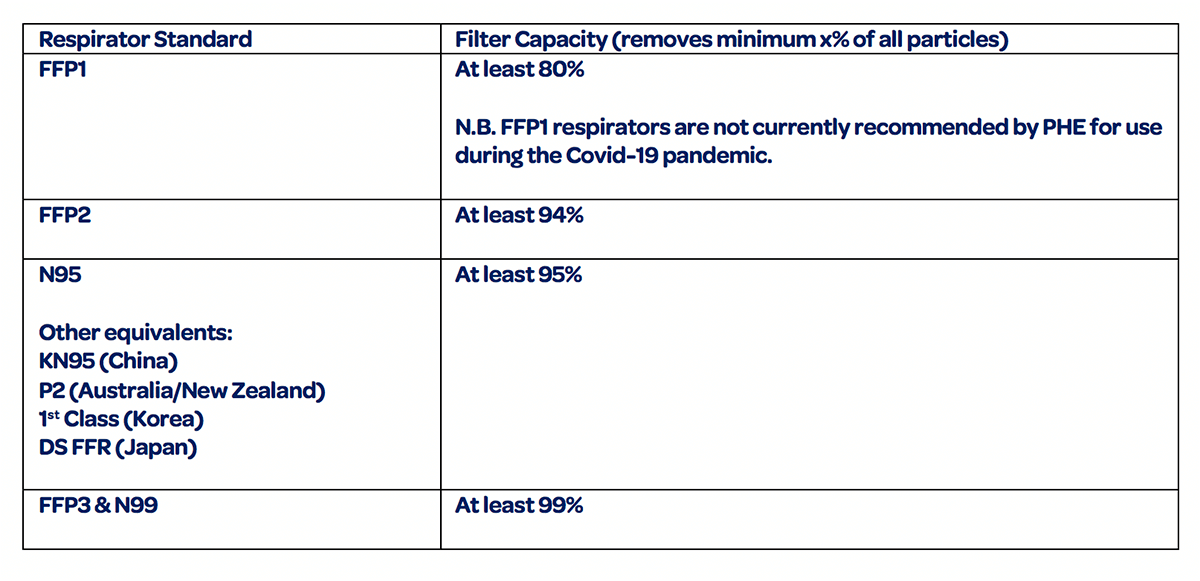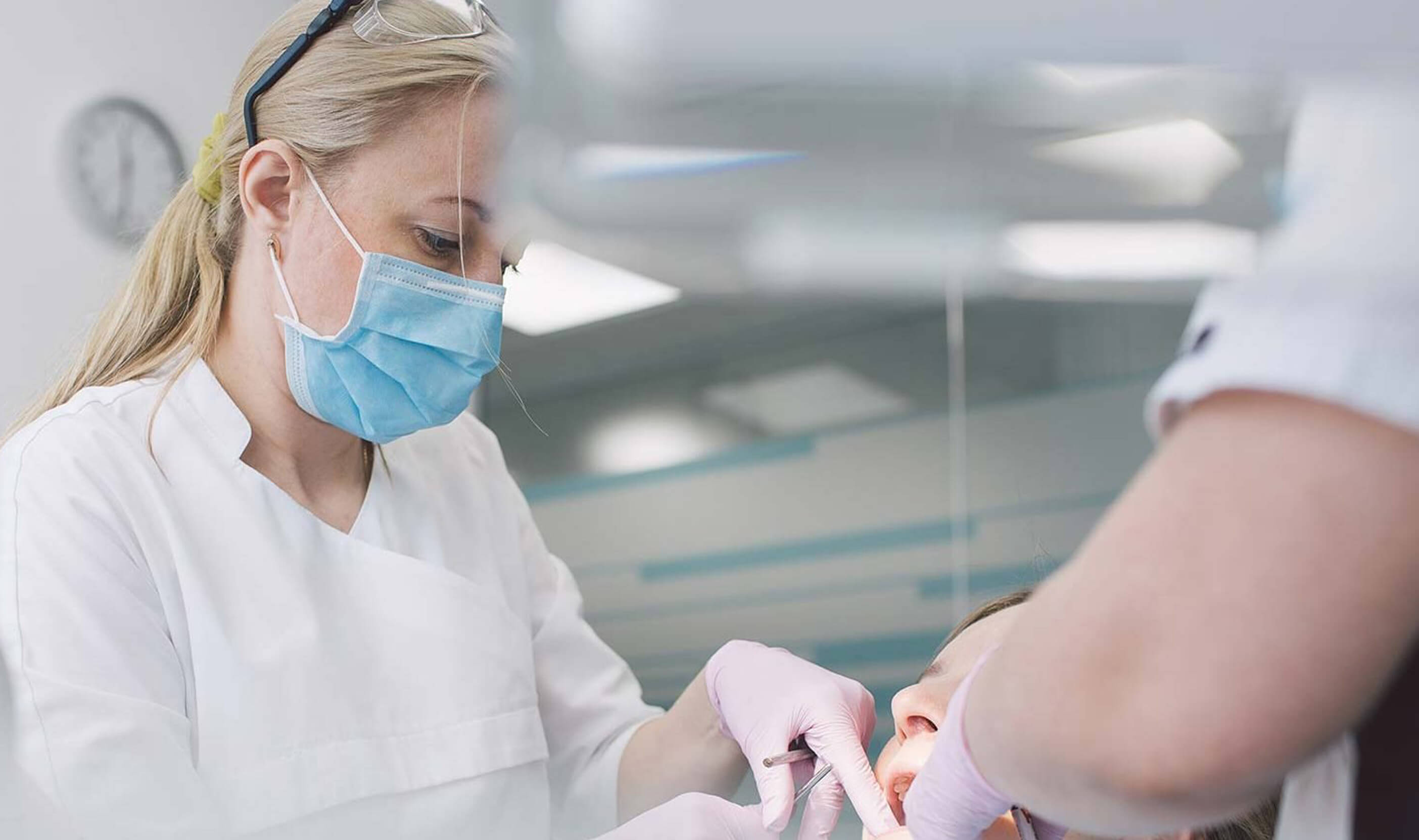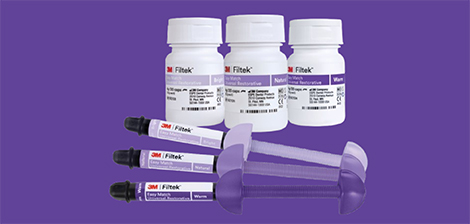PPE – Understanding Different Types Of Masks
Summary: Types of PPE for facial protection along with their specifications:
- FFP3 (European standard) respirators filter 99% of particles. FFP2 respirators are specified to filter 94% of particles. All respirators need to be fitted to the wearer before use.
- The N99 (American standard) respirator is an alternative to the FFP3 and also filters 99% of particles.
- An N95 respirator is specified to filter 95% of particles and is a close equivalent to the FFP2.
- The Type IIR (European Standard) fluid resistant surgical mask is the “regular” surgical mask often used in clinical settings.
The Level 2 (American standard) fluid resistant surgical mask is equivalent to the Type IIR. - Goggles or visors can help avoid eye contamination with respiratory droplets.
- All PPE for use in the UK requires a CE mark.
The latest PPE guidance from Public Health England (PHE), dated 2 April 2020, recommends the following:
- Table 1. Recommended PPE for healthcare workers by secondary care clinical context
- Table 2. Recommended PPE for primary, outpatient, and community care
- Table 3. Recommended PPE for ambulance, paramedics, first responders and pharmacists
- Table 4. Additional considerations for COVID-19
PPE referred to in the above documents
- FFF3 or FFP2 respirators (fit tested – see below for details). DD currently have no stock but will continue to procure. Supply lead times are longer. DD expect stock of FFP2s to arrive in the near future – please check our website for details. (DD Mask Products)
- Type IIR or Level 2 fluid resistant surgical mask (DD Mask Products)
- Long sleeved disposable gown (DD Gown Products)
- Apron. PHE also state that you must be “bare below the elbows and you scrub your hands, your wrists and your forearms” (DD Apron Products)
- Gloves (DD Gloves Products)
- Eye protection: disposable goggles or full-face visor (DD Eye Protection Products)
In addition to wearing PPE, clinicians should apply usual infection prevention and government recommended control measures, including environmental cleaning, hand hygiene and social distancing to reduce the risk of onward transmission.
A number of trade associations and authoritative bodies also recommend that depending on the circumstances a “full risk assessment” should be carried out before face-to-face contact.
Masks Vs Respirators - What's the difference?

N.B. The Type IIR Standard - EN14683 Rating (European Standards) is equivalent to the Level 2 specification assigned by the American Society for Testing and Materials (ASTM). Therefore, a Type IIR mask is similar to a Level 2 mask (manufacturers will label differently according to where the items are intended to be sold).
Respirator standards: FFP3 vs FFP2 vs N95
Europe uses two different standards. The “filtering face piece” score (FFP) comes from EN standard 149:2001. Then EN 143 standard covers the P1/P2/P3 ratings, which refers to the filtering efficiency.In contrast, the American standard managed by the National Institute for Occupational Safety and Health (NIOSH), uses a “Negativity” score denoted by the letter “N” to refer to filtering efficiency.

Valved vs Non-Valved Respirators
Valved respirators can make it quicker and easier to exhale air compared to non-valved respirators. Therefore, they may be more comfortable to wear, and less moisture builds up inside the respirator. However, the valved respirators can also let particles out from the wearer into the air without filtering. This is because the valve opens when exhaling. With the supply of respirators being limited, clinical judgement should be used whilst ensuring optimum safety when deciding what type of respirator to use.
Fit-testing for Respirators
Respirators rely on having a good seal with the wearer’s face. PHE recommends that a face fit test should be carried out to ensure the wearer is adequately protected.
HSE provides guidance on how to put on disposable respirators and fit-test appropriately. Please follow this guidance which provides a comprehensive step-by-step guide to fit testing.
References
- https://jamanetwork.com/journals/jama/article-abstract/2749214
- https://www.astm.org/
- https://www.en-standard.eu/csn-en-14683-ac-medical-face-masks-requirements-and-test-methods/
- https://jamanetwork.com/journals/jama/fullarticle/184819
- https://www.gov.uk/government/publications/wn-cov-guidance-for-primary-care
- https://bda.org/advice/Coronavirus/Pages/latest-updates.aspx
- https://fastlifehacks.com/n95-vs-ffp/
- https://www.nejm.org/doi/full/10.1056/NEJMoa2001017
- https://www.cdc.gov/niosh/npptl/topics/respirators/disp_part/default.html
- https://www.hse.gov.uk/research/rrpdf/rr1087.pdf
- https://uk.rs-online.com/webdocs/065e/0900766b8065e581.pdf



